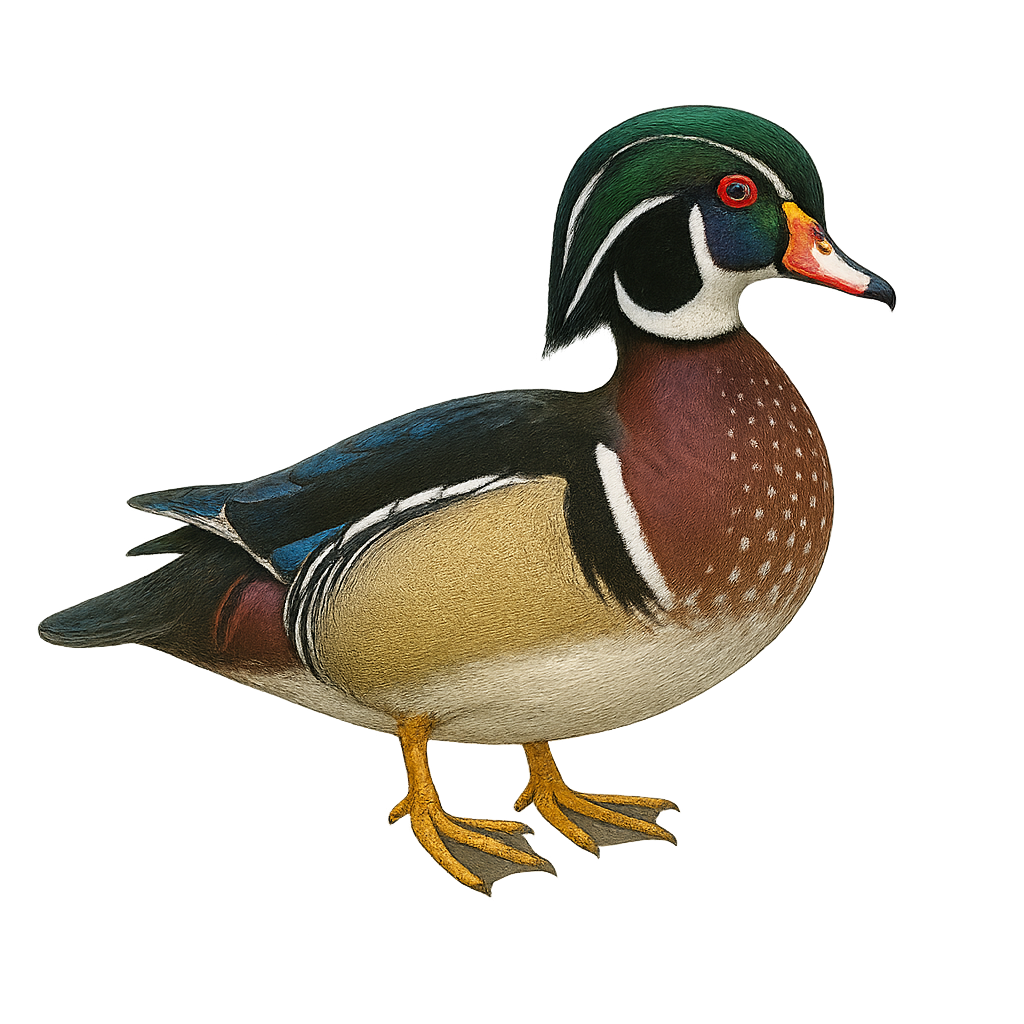Your wildlife photography guide.
Explore the wood duck in detail, study its behavior, prepare your shots.
Where to observe and photograph the wood duck in the wild
Learn where and when to spot the wood duck in the wild, how to identify the species based on distinctive features, and what natural environments it inhabits. The WildlifePhotographer app offers tailored photography tips that reflect the wood duck’s behavior, helping you capture better wildlife images. Explore the full species profile for key information including description, habitat, active periods, and approach techniques.
Wood Duck
Scientific name: Aix sponsa

IUCN Status: Least Concern
Family: ANATIDAE
Group: Birds
Sensitivity to human approach: Suspicious
Minimum approach distance: 10 m
Courtship display: March to May
Incubation: 28-30 jours
Hatchings: April to June
Habitat:
Riparian forests, swamps, wooded lakes
Activity period :
Primarily active during the day, with peak activity in the morning and late afternoon.
Identification and description:
The Wood Duck, Aix sponsa, is a striking waterfowl known for its vibrant plumage and unique habits. The male displays bright colors with an iridescent green head, red eyes, and distinctive white patterns, while the female has a more subdued brown-gray plumage with white eye markings. Found primarily in North America, this duck frequents wooded areas near lakes, rivers, and swamps. It is known for its ability to nest in trees, often using natural cavities or artificial nest boxes. The Wood Duck is an excellent swimmer and diver, feeding on aquatic plants, insects, and small fish.
Recommended lens:
400 mm – adjust based on distance, desired framing (portrait or habitat), and approach conditions.
Photography tips:
To photograph the Wood Duck, focus on wooded wetlands early in the morning or late afternoon for soft lighting. Use a 400mm or longer telephoto lens to capture details without disturbing the bird. Be patient and discreet, as the Wood Duck is suspicious. A tripod can be helpful to stabilize your camera, especially in low light conditions. Try to capture the duck in flight to highlight its vibrant colors and distinctive patterns.
The WildlifePhotographer App is coming soon!
Be the first to explore the best nature spots, track rutting seasons, log your observations, and observe more wildlife.
Already 1 430 wildlife lovers subscribed worldwide

